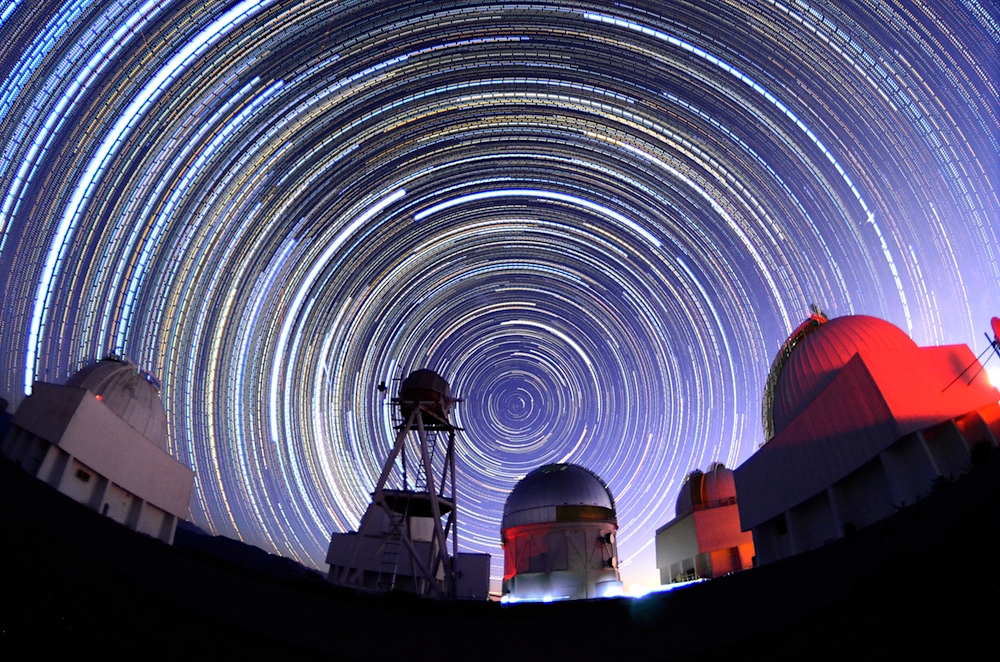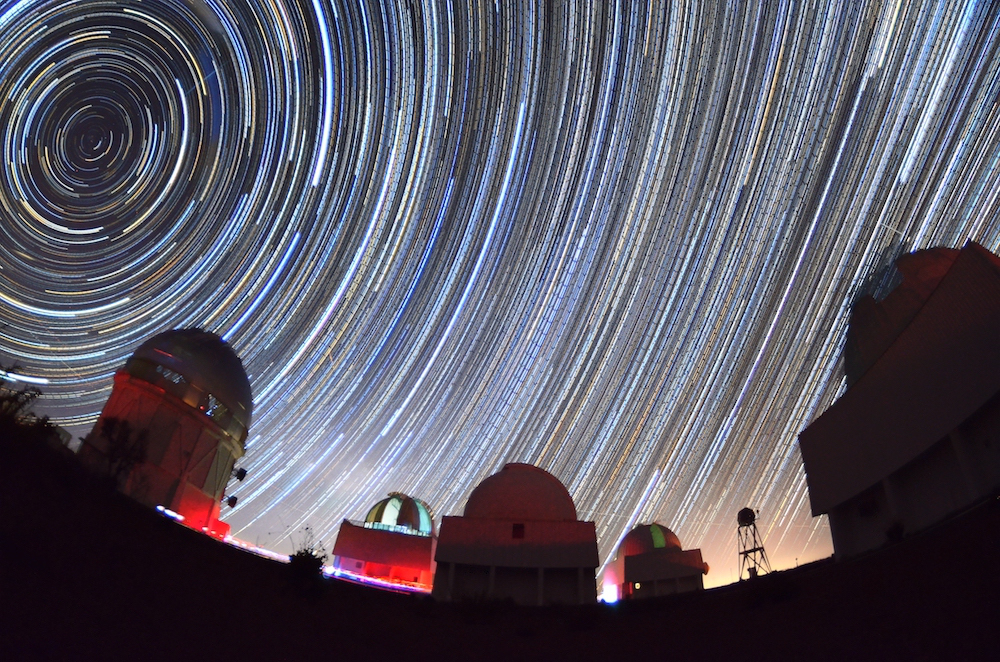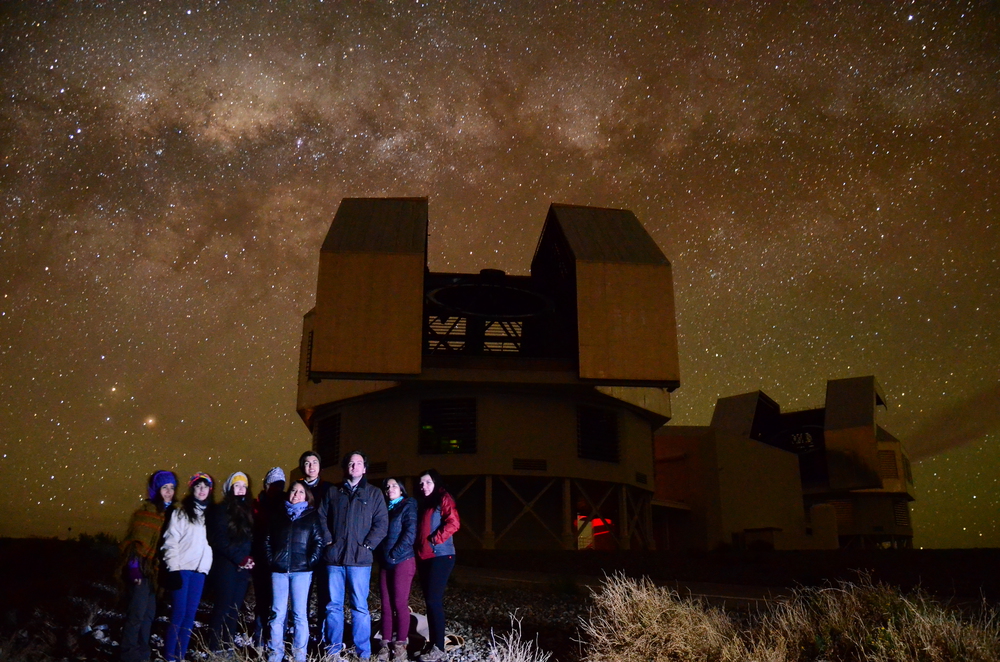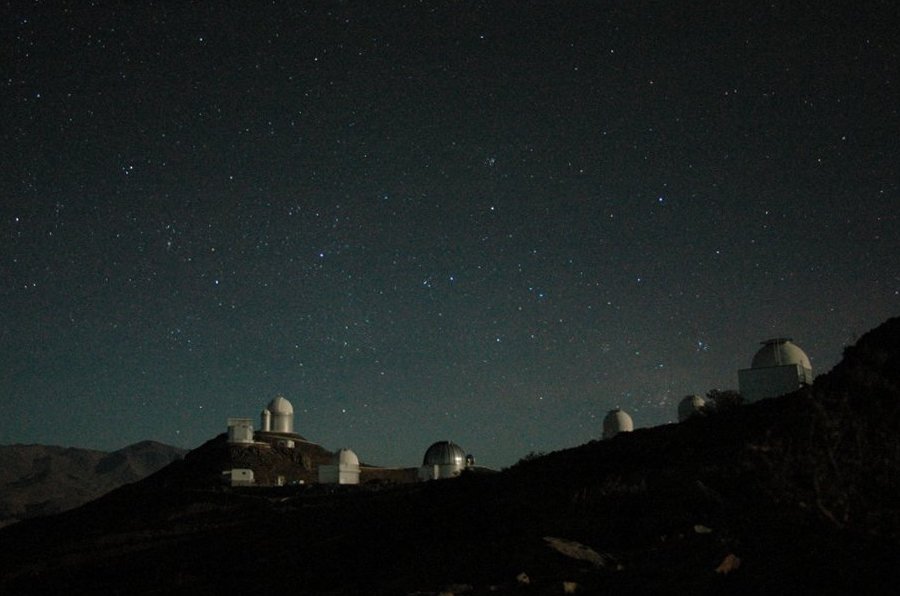
IMAGING THE HEAVENS:
I have no memory of when exactly I started doing
astrophotography, but I do remember that my first truly
successful (according to what I was trying to achieve)
astro-photograph was captured during a camping trip in the
Maule River Valley and the Laguna del Maule in the Chilean
Andes. It was a clear night, and I was using a borrowed
Nikon SLR and a color negative
film. The subject
was the constellation of Orion, and it was a
long-exposure, trail photograph. It was some years before
I entered college in 1993, most likely c.1989. Digital
cameras were not an option at that time, so I had to wait
a long time (compared to today's standards) before I could
see the actual result. The speed (ISO number) of the film
would only allow for long exposures, thus producing images
where the stars would look like elongated traces. With
time, a lot patience and perseverance, I could slowly
improve my astro-photographs and have access to
interesting sites such as professional observatories in
Northern Chile. I vividly remember those taken at the Las
Campanas and Cerro Tololo observatories in 1997 and 1999,
respectively.
In the year 2003 I acquired my very first digital camera,
but it was not until 2005 when I really started getting
reasonably good and interesting night sky images. The La
Silla Observatory was the starting location, and the
equipment used was a Nikon D70 digital SLR camera. In 2010
I replaced my D70 with a Nikon D7000, thus significantly
increasing the quality of the photographs. With time, I
would move from still photographs to timelapse
photography which allowed me to reproduce the motion
of the sky through the night.
I have been dedicated to basically make landscape photographs
directly with a camera and a tripod, as opposed to mounting the
camera on a telescope, either at one of its foci to get close-up
views of astronomical objects, or on "piggy-back" to get
point-like stellar images in long exposures. The scenery in my
night-time pictures usually is that of an astronomical
observatory, as it is the perfect environment to make
astro-photographs and is the one with very little light pollution
that I get to visit more often. Nowadays, thanks to the high
sensitivity (high ISO value) and noise-reduction algorithms of
cameras such as the D7000 and D7200 (which I own), near point-like
(PSF-limited) stellar images are possible
to get in no longer the 30 seconds of integration. I have also got
practice at using low-level illumination (no flash photography
allowed!) to cast light on foreground subjects (such as people) to
be included in the night-sky landscape. And I even go to exposure
times of as long as 30 minutes to keep producing classical
stellar-trail photographs.
My interest in the subject has taken me to develop and teach a
course on astrophotography to the general public at the
Universidad de Concepción. Below you can find a small
sample of some astro-photos that I have been able to obtain over
the years since my very beginnings in astrophotography. These are
lower resolution versions of the original images. If you would
like to see more and/or have access to the original files, please
feel free to
contact
me. You can also find more information about my
journey in photography on my photography
page. Enjoy!

The South Celestial Pole from Cerro Tololo Inter-american Observatory. This image was created by stacking the idividual frames of one of my timelapse movies on Cerro Tololo using the StarStax software developed by Markus Enzweiler. Some extra editing was performed with standard tools available on Mac OS X. Hot pixels have not been been removed.

The South Celestial Pole from Cerro Tololo Inter-american Observatory - another view. This image was also processed with StarStax. Hot pixels have not been been removed.
All photographs © R. Demarco, 1989-2023
Main Collection
(restricted)
|
Sample
Photos
|
Astrophotography
|
Timelapse
|
Air
& Space
Home
|
RD's Photography







